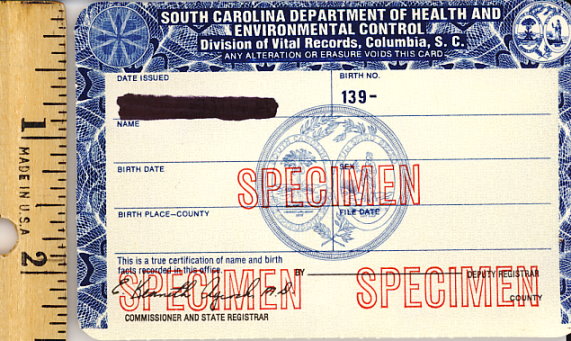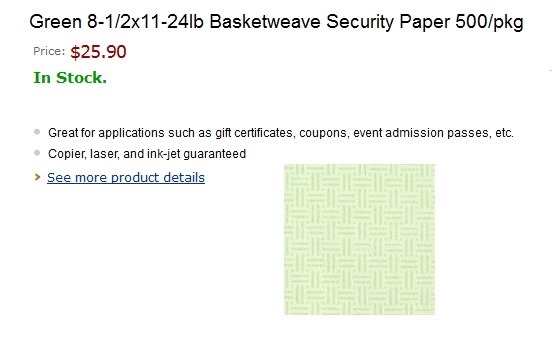EVVE
The Electronic Verification of Vital Events (EVVE) system is a national network exchanging information between government agencies to verify birth events. It’s a hub-and-spoke architecture centered at the National Association for Public Health Statistics and Information Systems (NAPHSIS), of which I used to be a member. Let’s say that you want to get a drivers license. You show up at a DMV office with your ID and your birth certificate. In years past, that birth certificate contained security features to show the DMV that it was authentic. That’s not as important now. With EVVE, the DMV sends an electronic query to NAPHSIS who brokers it to a state vital records server, which then verifies (or not) the information and routes the reply back to the DMV. If the birth certificate is fictitious or altered, EVVE will say so. This electronic wizardry is designed to support the REAL ID Act of 2005. I had some tangential involvement with EVVE implementation early on.
Most states have EVVE implemented today [link to Microsoft PowerPoint file], although not every implementation has all of their records in electronic form. Hawaii has birth records back to 1909 online for EVVE (well done, Hawaii, well done) while Connecticut only has records since 1993—tough luck to George W. Bush if he wants to get a drivers license verified through EVVE. 😈 New York isn’t online yet.
This electronic system and the REAL ID Act might have been the reason Doug Vogt imagined that federal law required all states to store electronic images of their birth certificates. EVVE, however, doesn’t work with images; it works with text.
Security paper
Most vital records fraud involves real certificates carried by someone other than their owner. That’s why a photo ID is necessary in addition to a birth certificate to get a passport. EVVE pretty much eliminates fictitious and altered certificates, but for records not in the EVVE system, there’s still the fall back security built into certificates, specifically, security paper and seals.
Security paper isn’t designed to copy well (or be easily altered). This means that anyone trying to do scanning experiments with President Obama’s long form birth certificate is at a severe disadvantage without some real security paper to test with and this is why it came as such a shock to me when I saw Cold Case Posse document darling Garrett Papit testing with a sample birth certificate clearly NOT on real security paper. Not that the Cold Case Posse results had any validity to to begin with, but at least they could have forked out $25.90 for a pack of off-the-shelf basket weave security paper. So where are all those PayPal donations going?
I’m no expert on security paper, but I know a lot more than the average guy. When I worked on vital records projects for the State of South Carolina, I became familiar with the security features on their certificate. If you showed me anything less than a spy-grade fake for a 1977 SC certificate, I could spot the fake in a second–and without even a magnifying glass. I don’t know if my technique is public knowledge or not, so I won’t say anything more about that except to note that intaglio printing with machine engraving was used on the certificate and the pale colored background rubs off if you try to erase it. Following is a wallet-sized specimen certificate from South Carolina used by county offices in 1977, intentionally scanned at a low-enough resolution to obscure details.

I had a conversation with a vital records official who showed me some of the publicly-known security features in that state’s certificate. They included tonal gradations, micro printing and thermal ink. She said that if she showed me the other security features, she would have to kill me. (By mutual agreement, I was not shown the other security features.) If you’ve ever received a pay check from ADP, an out-sourcing payroll company, you’ve seen the three features I mentioned (the thermal ink is on the back). I attended a seminar by a fellow who helped design the ADP payroll check who talked about its features. Finally, I sat for hours on end in a trade show booth, next to the booth of the American Bank Note Company who was pitching their portfolio of security features to state officials. Some banknote certificate paper can cost upwards of a dollar a sheet.
It has always puzzled me how simple a Hawaiian certificate is, compared to the specimen above, an ADP check, or the the Indiana certificate that I received a tour of. There are Hawaiian birth certificates on banknote security paper for some years that I have seen (but don’t have a handy link to). On the other hand, I have never actually seen an actual certified copy of a Hawaiian Birth Certificate. There may be security features not picked up on any scan. Somebody said that there was UV ink on it. Perhaps it relates to how far back Hawaii has their records available for verification online.
Update:
Since this article was originally published, I have obtained some Simpson DesignSecure™ Basketweave Pattern security paper that appears to be very much like the paper used by the State of Hawaii.





On the President Obama’s short form, the ink from the date stamp bleeds through to the front. This is also true for the DeCosta BC
http://s305.photobucket.com/user/Polarik/media/doc_decosta_pat_birth.jpg.html
“For the highest level of security against document alteration, TROY security toner is used in combination with TROY Laser Indelible coated paper. A “bleed through” effect will occur in the areas of the document where the toner and the coating interact. Toner printed on uncoated areas of the document will not bleed through. This security feature is known as Indelible printing, because the dye creating the bleed-through image permeates the paper and cannot be removed without visibly damaging the document. To assure the integrity of this technology, TROY Laser Indelible coated paper is only available through TROY and licensed security paper providers.”
http://www.troygroup.com/industry/government/vitalrecords/Specialty/Prevent_document_alteration.aspx
How much you wanna bet that Zullo knows this, and its one of the reasons he’s been so quiet as of late?
Doc says: If you’ve ever received a pay check from ADP, an out-sourcing payroll company, you’ve seen the three features I mentioned (the thermal ink is on the back).
The last time I ordered checks from Intuit/Quicken they were offered as an option and were, as I recall, pretty expensive.
Since I rarely print out more than two checks a month these days I opted to get the cheap, low security checks!
He’s probably busy working on an update for the posse’s website. Nothing new there since June 12th!
None of the “News/Press” links work but the “Donations” page is still just fine.
http://www.mcsoccp.org/joomla/
Any day now!
Just don’t mail them from a residential mailbox, and you should be OK. Forgers ride around neighborhoods and take outgoing checks from the box, alter them to make themselves the pay-to, increase the amount, then cash them. It’s extremely easy to wash off most ballpoint ink–I use a Uni-ball Signo for my checks to prevent that.
The guy who helped design the ADP checks was a former forger and he walked the seminar through the process of coming to a new town, establishing an identity, washing checks, and moving on. He even discussed ordering real check stock and then forging municipal checks.
Where we live we don’t have home delivery so I have to drop outgoing mail at the post office.
Before we moved from the Phoenix area we did and we had exactly the problem you talk about. The cops stopped one car with kids in it and a back seat full of other people’s mail!
Was that Frank Abagnale? He gave a talk at the company I used to work for. His descriptions of his felony days was certainly eye-opening.
I’m not really sure. It was a number of years ago.
I have a package of the security paper mentioned in the article above. It’s not the same paper Hawaii uses–for one thing the pattern is only on one side. It also shows “VOID” when you scan it, at least with my scanner. The color is close and the pattern is about the same size.
I’ve printed a few samples. I get better results with a laser printer than ink jet. Also I think that the White House PDF (with the green removed) works better than the AP version with the blue removed. That may just be my bias, but the AP scan is a 2rd (at least) generation copy, while the White House PDF is a scan of the original.
I still believe that the Hawaii paper is just Simpson DesignSecure basketweave green (SKU 72338). I thought I saw it listed for over $35 a ream from a local paper store that would have to order it, but in quantity it could cost as little as 4 cents a sheet. They have security fibers that don’t show up properly with a color copy and dyes that shows tamper evidence if solvents are used to try to remove ink or toner.
http://www.simpsonsecuritypapers.com/design.asp
http://www.simpsonsecuritypapers.com/pdf/Stocked-Items-Sheets.pdf
Naturally … laser printers are higher res and toner-based, as are photocopiers.
I have an old laser printer that’s just 300 dpi.
Thanks for the info. I’ve ordered a ream.
Still beats inkjet hands down. Effective resolution of inkjet tech is 150dpi. And liquid ink bleeds. And if it’s an inkjet that only prints “composite black”, no pure black option, yikes.
Good luck with the testing. Have fun 😀
The main issue I have with any kind of toner is archival stability. I’ve seen it stick to other pages. The worst is if it’s placed against any kind of vinyl, such as the inside lining of most binders or the clear plastic flip/accordion file in a wallet.
The other issue is that you’ve got to be careful where you fold it because the toner is primarily only at the surface and will crack at fold lines. Xerox even sells a special creaser designed to minimize toner cracking at fold lines.
http://www.xerox.com/digital-printing/feeders-print-finishing/offline-finishers/duplo-dc455-creaser/ensg.html
I still have a color inkjet but I don’t use it much. It does have a black-only cartridge, but it refuses to work if all three color cartridges aren’t in place and showing adequate ink. The kicker is that even if I don’t use them, the cartridges will start drying up after several months.
All of my credit card statements are done in inkjets. All the high volume invoices use them.